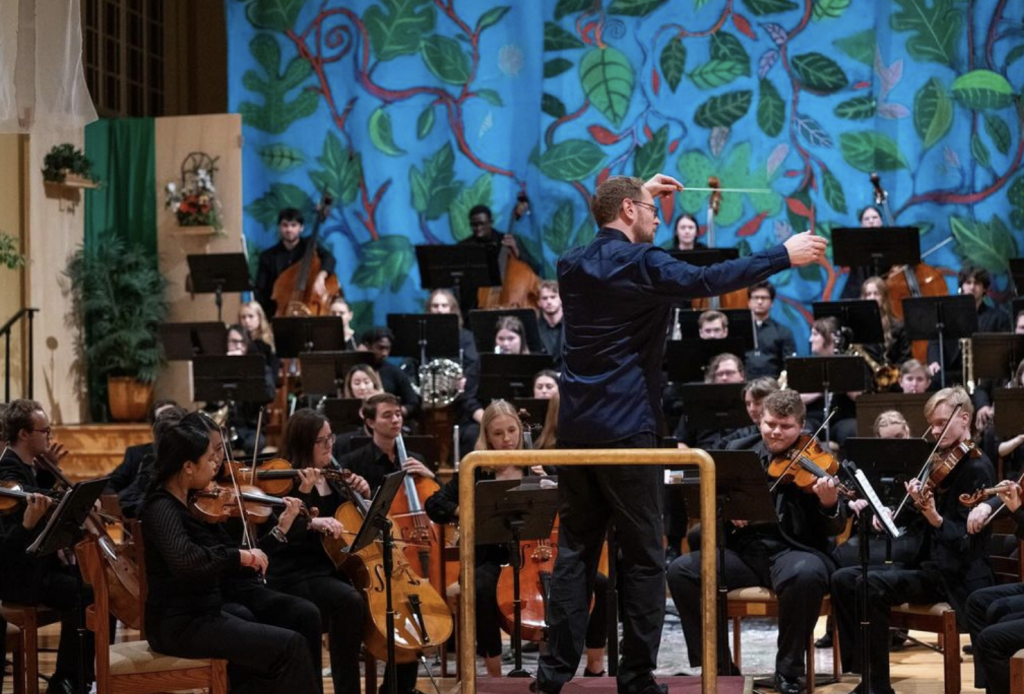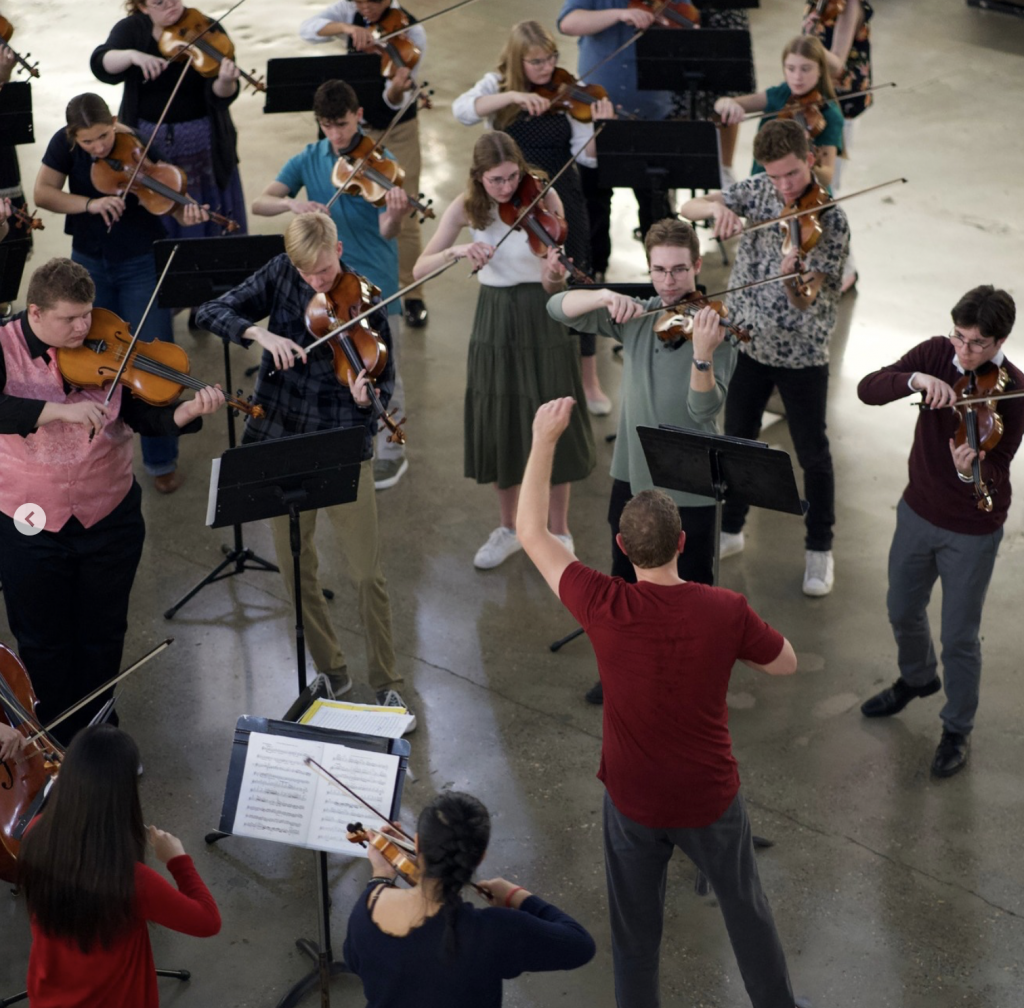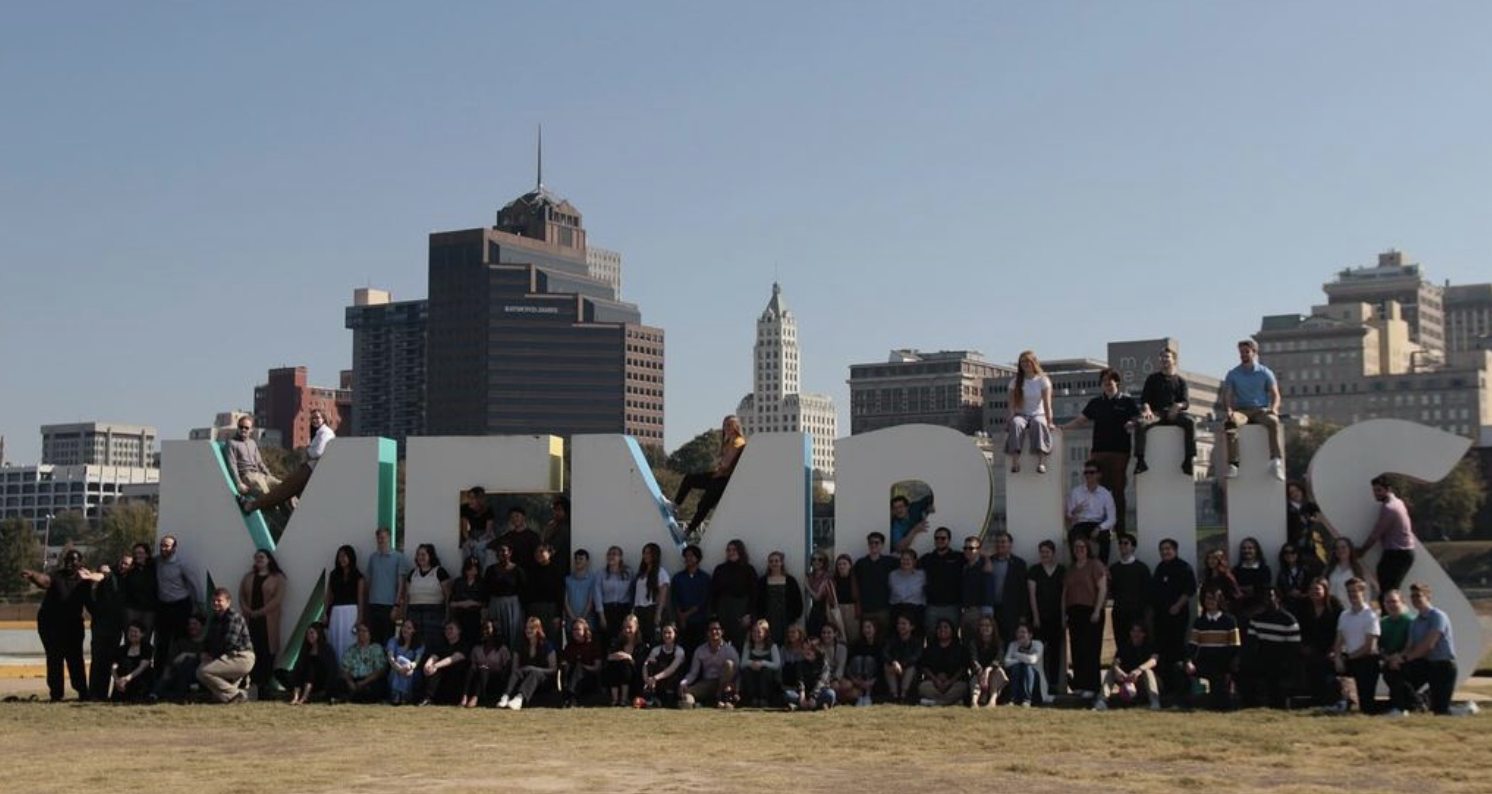MOORHEAD – Conductor Kevin Sütterlin and The Concordia Orchestra made their way down south to Memphis, Tennessee to perform a myriad of pieces throughout the week of Oct. 27, 2024. After kicking off the ensemble’s annual fall tour by playing in Detroit Lakes, MN, ensemble members boarded a coach bus for a lengthy 16 hours before arriving at their destination.
“It sounds silly, however, when you’re kind of stuck on the bus for a long time it actually does help us grow together. You’re kind of forced to be in this situation where you have to talk to people, which is really important. We were also almost always doing something, and that helps us as an ensemble, learn to work together and make progress. I think the biggest thing about tour, however, is the fact that we all want to participate. I cannot stress how important that is for an ensemble,” Victor Evans, a sophomore French horn player in the Concordia Orchestra, said.

According to Sütterlin, the destination of Tennessee, is a further away destination that the Orchestra usually travels to. The location was chosen because of its historical significance specifically regarding the Civil Rights Movement. He highlighted the importance of the relationship between the repertoire that the orchestra performed and the location. Furthermore, Sütterlin went to college in Memphis and has worked with a chamber orchestra in the city for 10 years.
The Concordia Orchestra played four different pieces on their tour, including “The Montgomery Variations,” a seven-movement piece written by Margaret Bonds in 1964. “The Montgomery Variations” “is a group of freestyle variations based on the Negro Spiritual theme ‘I want Jesus to Walk with Me,’” according to the Concordia Orchestra’s 2024 tour program. The piece includes major themes such as racial injustice and hate crimes against African Americans.
“(The Orchestra’s repertoire) tied in so significantly into the history of Memphis. And just really, as much as we could as a generation that didn’t live at that time, experienced what perhaps it must have been like to have lived during that time. So, the music making changed once we were there in the actual place. That was a big objective for me in planning this tour, forming a connection between the place we go to the music we perform,” Sütterlin said.

The Concordia Orchestra has performed many pieces that have been written by a diverse group of composers, which is an intentional choice, according to Sütterlin.
“I try in every single concert to showcase music by composers that happen not to be dead white guys, because I think it’s so important that everyone is represented, whether that’s people in the group or people that come to our concerts,” Sütterlin said.
The Orchestra’s fall tour is known to bond the ensemble members and help them to “grow together as a family,” according to Sütterlin. Furthermore, since the ensemble tours earlier in the year, the community created on tour gets to be relished for the remainder of the academic year.
“(Going on tour) helps us as an ensemble grow together and as well as exposing people across the country and the world to underrepresented literature that truly should be represented more often. I love the way Sütterlin incorporates music into the programs that is underrepresented and music that is by a diverse set of people,” Evans said.
The Concordia Orchestra played at a variety of venues over their tour, including a number of churches, high schools, the University of Memphis Sheidt Family Performance Arts Center and more. Accompanying the ensemble were two Concordia faculty members: Victor Avila Luvsangenden, a violinist, and Eduard Teregulov, a cellist. The two performed Brahms’ “Double Concerto in A minor for Violin, Cello, and Orchestra, Op. 102” alongside The Concordia Orchestra.

